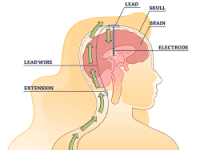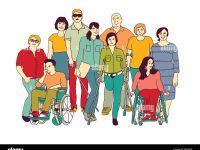Living with a chronic illness or disability can often feel isolating and overwhelming. However, a supportive community can transform this experience, offering comfort, understanding, and a sense of belonging. Here, we explore how communities can empower individuals to feel good about their health challenges and foster a more positive outlook on life.
1. Creating Safe Spaces for Open Dialogue
A key way communities can support those with illnesses is by fostering open communication. Safe spaces—whether physical or virtual—allow individuals to share their experiences, fears, and victories without judgment. Hearing “I understand” from someone with shared experiences can alleviate feelings of loneliness and normalize the ups and downs of living with an illness.
Support groups, forums, and social media communities tailored to specific conditions are excellent platforms for these interactions. They encourage dialogue, provide validation, and remind individuals that they are not alone.
2. Sharing Resources and Knowledge
Communities often serve as a hub for valuable resources. Members can share tips on managing symptoms, recommend healthcare professionals, and provide insights into navigating the healthcare system. For example, a person newly diagnosed with dystonia might benefit from learning about physical therapies, assistive devices, or relaxation techniques from others in a similar situation.
Educational events, webinars, and shared articles can further equip members with tools to improve their quality of life, empowering them to take charge of their health journey.
3. Highlighting Strengths and Achievements
Acknowledging the strength it takes to live with an illness can shift focus from limitations to accomplishments. Communities that celebrate personal victories—whether it’s completing a challenging task or simply making it through a tough day—help individuals see their resilience.
Regularly featuring stories of hope, determination, and recovery inspires others and reinforces a positive mindset. These narratives remind members that their illness does not define them.
4. Offering Emotional and Practical Support
Communities excel at providing both emotional and practical support. Emotional support might include lending an empathetic ear, validating feelings, or simply being present. Practical support could involve helping with daily tasks, organizing meal trains, or crowdfunding for medical expenses.
When members feel supported in tangible ways, they often experience reduced stress and a greater sense of well-being.
5. Promoting Inclusive Activities
Inclusive activities, such as adaptive sports, art therapy sessions, or social gatherings, foster camaraderie and bring joy to participants. These events encourage members to focus on what they can do rather than what they cannot. Shared experiences create bonds and provide a much-needed break from the daily challenges of illness.
6. Advocating for Awareness and Change
Communities can also play a powerful role in advocacy. By raising awareness about specific illnesses, they help break stigmas and promote understanding among the general public. Advocacy efforts can lead to improved accessibility, better healthcare policies, and more funding for research.
When individuals see their community fighting for change, they often feel a renewed sense of purpose and pride in being part of something bigger.
Final Thoughts
A supportive community has the power to redefine how individuals perceive their illness. By offering connection, knowledge, and encouragement, communities can help members focus on their strengths, embrace their journeys, and find joy amidst challenges.
Together, we can ensure that no one faces their illness alone and that everyone feels valued, understood, and empowered.





















0 Comments